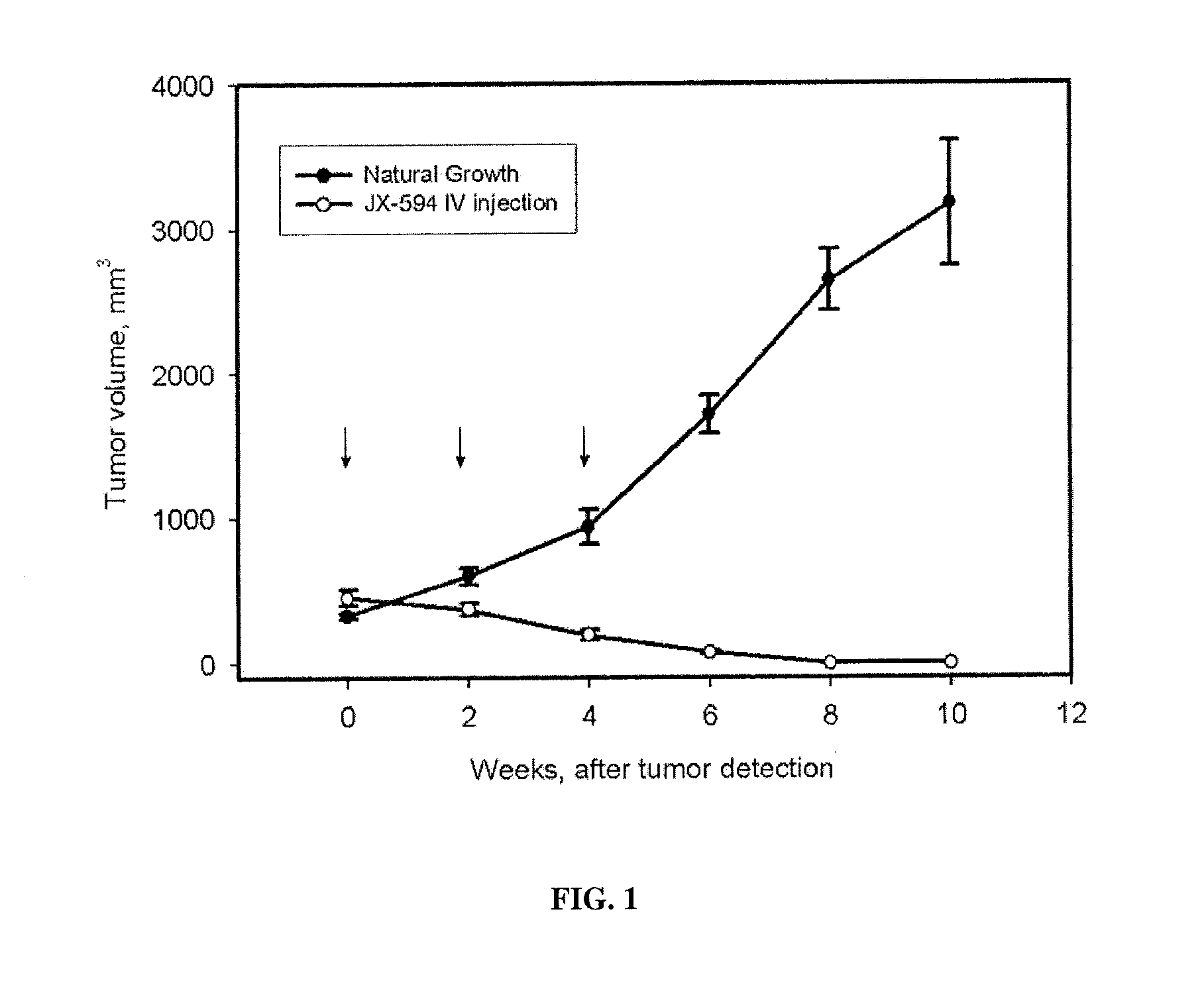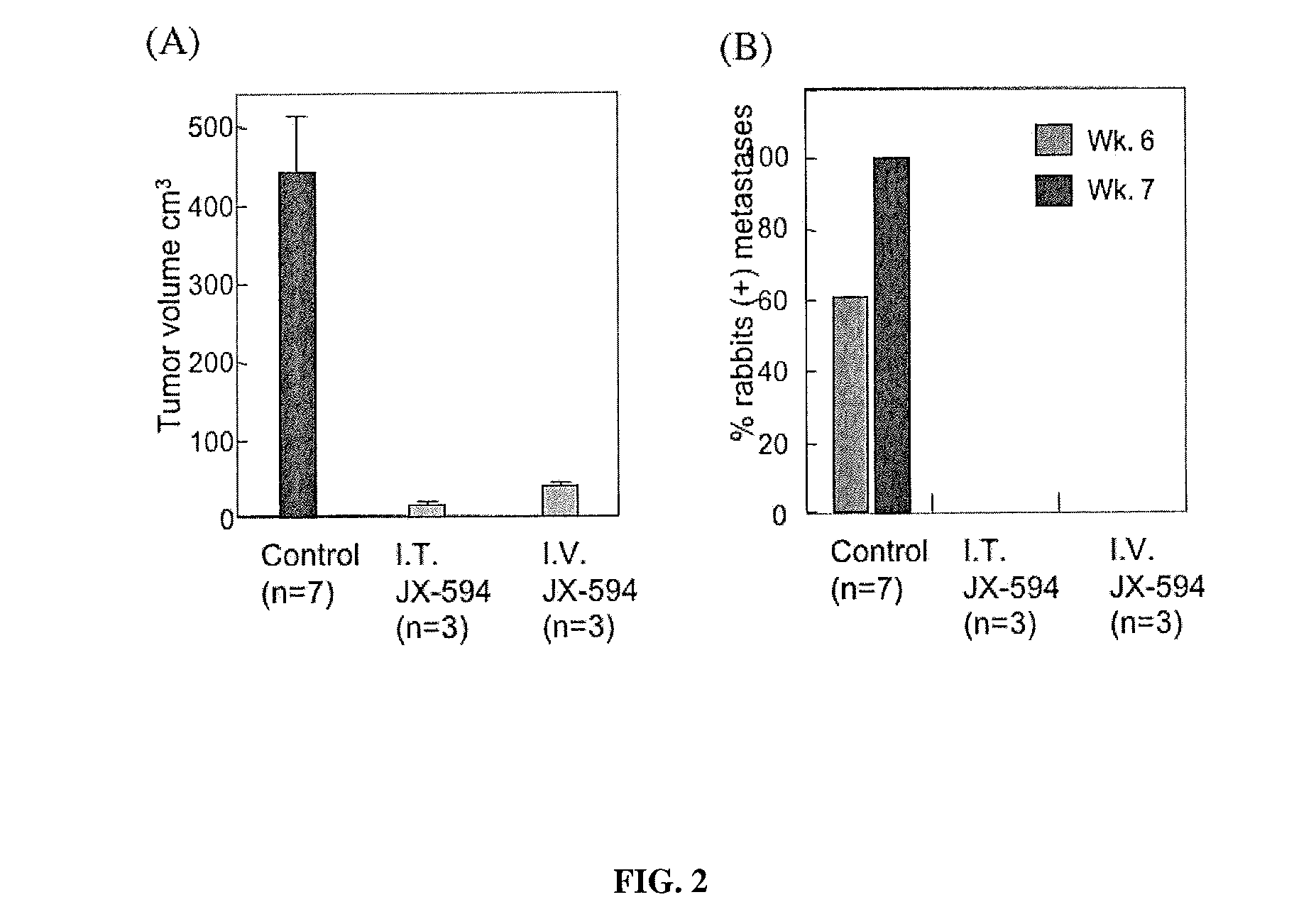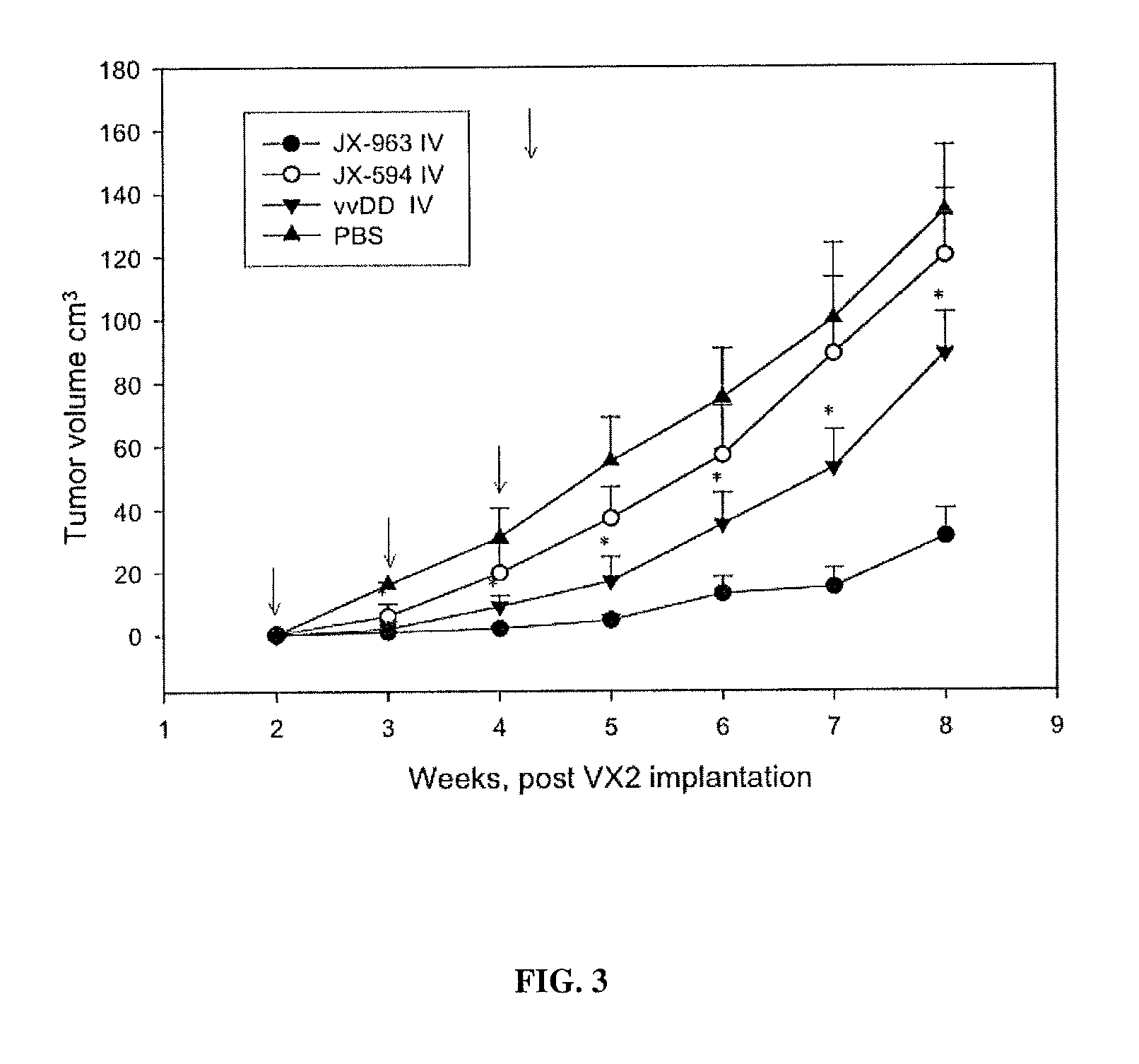Oncolytic vaccinia virus cancer therapy
a technology of vaccinia virus and cancer treatment, applied in the field of oncolytic vaccinia virus cancer therapy, poxviruses, etc., can solve the problems of affecting normal tissue cells, side effects of chemotherapy drugs, and few effective options for many common cancer types, so as to reduce cell viability and cell viability
- Summary
- Abstract
- Description
- Claims
- Application Information
AI Technical Summary
Problems solved by technology
Method used
Image
Examples
example 1
Material and Methods
[0280]Viruses and cell lines. The panel of wild type poxvirus strains (Wyeth, Western Reserve (WR), USSR, Tian Tan, Tash Kent, Patwadangar, Lister, King, 1HD-W, 1HD-J and Evans) was kindly provided by Dr Geoff Smith, Imperial College, London. Human Adenovirus serotype 5 (Ad5) was obtained from ATCC. The Viral growth factor (VGF) deleted strain of WR (vSC20) was kindly provided by Dr Bernie Moss, NIH. The thymidine kinase deleted strain of WR (vJS6) and the TK-, VGF-double deleted strain of WR (vvDD) are described in Puhlmann et al. (2000) and McCart et al. (2001). WR strain expressing firefly luciferase was kindly provided by Dr Gary Luker, (Uni Michigan).
[0281]Vaccinia strain JX-963 was constructed by recombination of a version of the pSC65 plasmid containing the E. coli gpt and human GM-CSF genes (under the control of the p7.5 and pSE / L promoters respectively) into the thymidine kinase gene of the vSC20 (VGF deleted) strain of WR. Further selection of white pla...
example 2
Rat Tumor Model
[0295]Rats (Sprague-Dawley, Males) were exposed to carcinogen (N-Nitrosomorpholine, NNM) in their drinking water (175 mg / L) for a period of 8 weeks, during which time liver cirrhosis developed, followed by in situ development of tumors (hepatocellular carcinoma or cholangiocarcinoma) within the liver between weeks 16-20 on average (model previously described in Oh et al., 2002). Tumor detection and evaluation was performed by an experienced ultrasonographer using ultrasound imaging. Tumor sizes were approximately 0.75-1.5 cm. in diameter at baseline immediately prior to treatment initiation; tumor volumes were not significantly different at baseline between the control and treatment groups (estimated mean volumes were 400-500 mm3) Control animals (n=17) received no treatment, whereas treated animals (n=6) received intravenous injections (via tail vein) with a poxvirus (Wyeth strain; thymidine kinase gene deletion present) expressing human GM-CSF from a synthetic early...
example 3
Rabbit VX2 Tumor Model
[0297]A study was performed in a VX2 rabbit carcinoma model (as described in Paeng et al., 2003). Rabbit was selected as a species because human GM-CSF was previously demonstrated to have significant biological activity in rabbits (in contrast to mice). VX2 tumors were grown in muscle of New Zealand white rabbits and cells from a 1-2 mm3 fragment of tumor were dissociated, resuspended in 0.1 ml normal saline and were injected beneath the liver capsule (21 gauge needle; injection site covered with surgical patch with a purse-string tie) and allowed to grow for 14 days until primary tumors were established (mean diameter, 1.5-2.0 cm; est. volume 2-4 cm3). VX2 cells were demonstrated to be infectable by vaccinia poxvirus ex vivo in a standard burst assay. Tumor sizes were monitored over time by CT scanning and by ultrasound. Over the following seven weeks, control (untreated) animals (n=18) developed tumor progression within the liver, with estimated mean tumor vo...
PUM
| Property | Measurement | Unit |
|---|---|---|
| volume | aaaaa | aaaaa |
| time | aaaaa | aaaaa |
| molecular mass | aaaaa | aaaaa |
Abstract
Description
Claims
Application Information
 Login to View More
Login to View More - R&D
- Intellectual Property
- Life Sciences
- Materials
- Tech Scout
- Unparalleled Data Quality
- Higher Quality Content
- 60% Fewer Hallucinations
Browse by: Latest US Patents, China's latest patents, Technical Efficacy Thesaurus, Application Domain, Technology Topic, Popular Technical Reports.
© 2025 PatSnap. All rights reserved.Legal|Privacy policy|Modern Slavery Act Transparency Statement|Sitemap|About US| Contact US: help@patsnap.com



